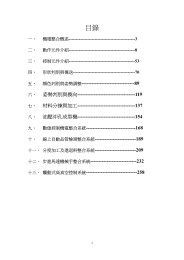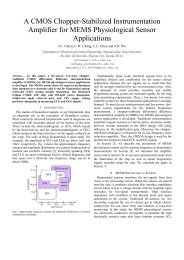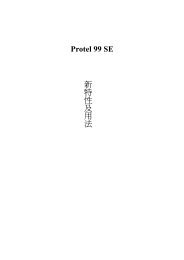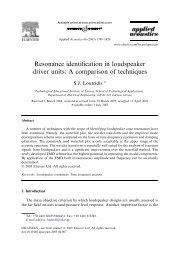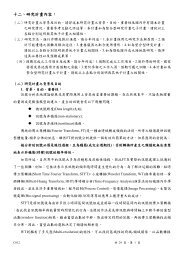良榮論文最終 - 吳順德教授- 國立臺灣師範大學
良榮論文最終 - 吳順德教授- 國立臺灣師範大學
良榮論文最終 - 吳順德教授- 國立臺灣師範大學
Create successful ePaper yourself
Turn your PDF publications into a flip-book with our unique Google optimized e-Paper software.
Abstract<br />
An ideal algorithm for nonlinear and non-stationary data analysis was<br />
proposed by Huang et al. in 1998, as known as Empirical Mode Decomposition<br />
(EMD). Comparing to Fourier analysis assuming the time series data is linear and<br />
stationary, EMD is a method capable of analyzing not only linear and stationary<br />
but also nonlinear and non-stationary. With this useful feature, EMD has been<br />
applied to many fields. However, lacking theoretical foundation, there are some<br />
drawbacks in EMD, such as sifting stop criterion, boundary effect, mode mixing,<br />
etc. To fix the mode mixing problem, the main drawback of EMD, a process is<br />
presented in this paper, which combines iterative Gaussian diffusive filter (IGDF)<br />
with oblique-extrema based sifting process (OEMD) since either IGDF or<br />
OEMD is not the perfect solution for mode mixing problem, for the reasons that<br />
one of them is only able to solve specific problems and the other one is too<br />
time-consuming. The experiments presented in this paper indicating that the<br />
proposed process works as expected.<br />
Keywords: Empirical Mode Decomposition, mode mixing, iterative Gaussian<br />
diffusive filter, OEMD<br />
III



